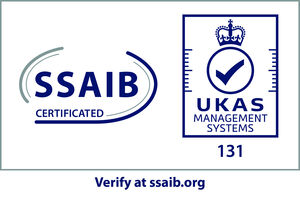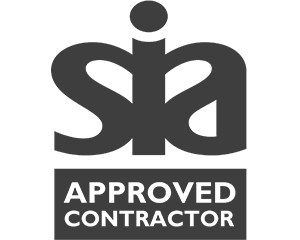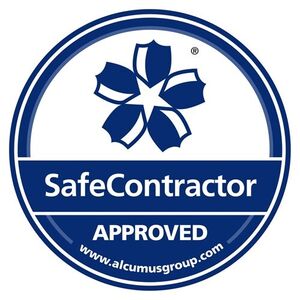Near Misses, Incidents and Accidents Procedure
Hazards are present in all workplaces. Control measures put into place should reduce those hazards to an acceptable level to prevent accidents and cases of ill health.
The purpose of this arrangement is to provide advice and guidance to all employees together with the information necessary for the reporting and subsequent investigation of accidents, incidents and near misses. An accident is an unplanned event that results in personal injury or damage to property, plant or equipment.
Typical reportable instances include the following, this list is not exhaustive and we will contact HSE’s advice line for further guidance, support and clarification.
Over seven-day injury
This is an injury, which is not major but results in the injured person being away from work or unable to carry out their normal duties for more than three days. Apart from the day of the accident, weekends and days that would not normally be worked, such as rest days, are counted.
Major injuries
- Fracture other than to fingers, thumbs or toes.
- Amputation.
- Dislocation of the shoulder, hip, knee or spine.
- Loss of sight (temporary or permanent).
- Chemical or hot metal burn to the eye or a injury to the eye.
Work-related disease
- Certain poisonings.
- Skin disease such as occupational dermatitis.
- Skin cancer or acne.
Dangerous occurrence
- Collapse, overturning or failure of load bearing parts of lifts and lifting equipment.
- Plant or equipment coming into contact with overhead lines.
- Electrical short circuit or overload causing fire or explosion.
Employee’s responsibilities
Any employee who is involved in, or aware of, an accident at work must follow the accident reporting procedure and inform the employers, either orally or in writing as soon as possible after the accident occurs. The nominated person will complete the necessary documentation including accident book entry, investigation and comply with any notification and reporting requirements.
Reports
All incidents require reporting to SSS Control and the client’s management. All incidents and ‘near misses’ must be written on the Incident Report Form, all accidents are to be written up on the Accident Report Form followed by an investigation Form.
Site Reporting - Use of Notebooks
The following rules for maintaining records in your notebook must be observed:
- Each entry should be made at the time of the incident, or as soon as practicable afterwards
- All entries should appear in the order in which they occurred
- All entries should be made in pen and
- Words or sentences should never be erased or obliterated, no pages should be torn out
- A single line should be drawn through mistakes, with the correct word being written after it and initialed at the end of the drawn line
- All alterations should be initialed
- Only official entries should appear in the books
- All entries must be legible, accurate and signed and dated by the writer at the end.
- Pages should be ruled off at the end of each shift
- Pocketbooks should be checked regularly by supervisors and the date, time and signature of the supervisor should be entered into the pocketbook
It is necessary to record all non-routine occurrences and any or failures of staff, contractors, suppliers or visitors to comply with security procedures. This also includes incidents involving verbal or physical abuse to security personnel.
Serious incidents must be entered in the Daily Occurrence book as they occur or at the earliest opportunity whilst details are still clear in the Security Officer’s mind.
At a convenient time before the end of the shift the Security Officer directly involved in the incident is to complete a formal Incident Report.
All details are to be recorded with a step by step account of what happened, ensure full names and the names of witnesses are included.
Serious incidents must be reported by telephone directly to the MD, Operations Director and to SSS Control. A RIDDOR report will be made by the Head of Health and Safety. When reporting an incident to SSS control it is important to obtain a DOB reference number and add it to the report form.
Relevant information will then need to be transferred to the Incident/Accident Report Form. Three copies are to be made: One copy to go to client management, one copy to SSS Control Room and the third copy to be retained in the SSS Site File.
Control Room are to send a scanned copy of report to the Administrator for recording in the Incident Register.
Head Office Reporting
It is necessary to record all non-routine occurrences and any or failures of staff, contractors, suppliers or visitors to comply with security procedures. This also includes incidents involving verbal or physical abuse to any employee. All accidents of a minor or major nature should be reported to your line manager.
Serious incidents must be reported to the MD and details entered onto an Incident /Accident Form as they occur or at the earliest opportunity whilst details are still clear in the employee’s mind.
Incident Reports are available from the Control Room; an Accident Report form is included in this procedure. Three copies are to be made: One copy to go to your line manager, one copy to SSS Control Room and the third copy to be sent to the Administrator.
All details are to be recorded with a step by step account of what happened, ensure full names and the names of witnesses are included.
Serious incidents must be reported by telephone directly to the MD, Operations Director and to SSS Control. A RIDDOR report will be made by the head of health and Safety.
What will happen next?
- If the incident is still outstanding The Administrator will then raise a Corrective Action Form.
- The Administrator will request support from the relevant employees to investigate the incident. See Accident Investigation Procedure.
- The results of the investigation must be returned to the Administrator within 24 hours, if this is not possible then notification must be sent to the Administrator by email.
- As a result of the investigation the Administrator will meet with relevant stake holders (this may include those involved in the incident) and agree corrective action/s.
- Within 72 hours the Administrator will review the results of the corrective action’s and verify completion if appropriate.
- The Administrator will contact relevant parties to ensure satisfaction and record accordingly.
- If this outcome is unsatisfactory the relevant parties will be directed to contact the Managing Director to review the decision.
- At the conclusion of the process the Administrator will update the Incident Register.
- The Incident Register will be reviewed on a monthly basis to ensure that complaint trends are recognised and actioned. This information will be reported to the MD.
Guidelines for completing Incident/Accident Reports
The following list shows examples and is not a minimum or maximum to be entered:
- Date, place and times of duty
- Personal details of offenders - name, address, date of birth, phone number
- Detail of incidents such as:
- What happened
- Descriptions of offenders
- Time of arrest
- Time police were called and the time police arrived
- Details of attending officers (name or shoulder number)
- Details required for subsequent witness statements or reports
- Details of any witnesses
- Any information that you cannot trust to memory
Reasons for Records
There will be occasions when it is necessary for Security Offers, Head Office employees to create some form of written records in relation to certain types of incidents. These records or reports may well be used as evidence in the case of a prosecution of an offender. Perhaps equally as importantly, they could be used to protect the employee from malicious allegations or unnecessary prosecutions.
In addition to writing all occurrences in the Daily Occurrence Book all incidents and accidents of a serious nature i.e. breach of security, any incident or accident require reporting to SSS control and the client’s management. All incidents must be written on either the SSS Incident Report Form or Accident Form.
Near Misses, Incidents and Accidents Procedure
- Notification of incident
- Complete an Incident Report Form or Accident Report Form and send to the Control Room. CR to scan and send a copy to Administrator (amy.perkins@servoca.com).
- Administrator to register incident on the Incident Spreadsheet. If incident resolved then it will be entered as ‘Closed’. If a RIDDOR is to be reported inform the Head of H&S.
- If the incident is still outstanding the Administrator will raise a Corrective Action Form and designate an ‘investigator’.
- Administrator to request an investigation and feedback is to be received within 24 hours.
- Administrator to discuss suitable corrective action with appropriate stakeholder/s and assign task/s to relevant individual/s. These tasks are to be completed within 72 hours.
- Administrator to verify actions undertaken and sign off, updating spreadsheet accordingly.
- Administrator to report to the Ops Meeting monthly to discuss incidents and identify any significant trends requiring preventative action.
Policies
Health and Safety Policy Quality Policy Environmental Policy Modern Slavery Policy COVID-19 Statement Anti Bribery and Corruption Policy Complaints Procedure Corporate Social Responsibility Policy Data Protection Policy Accidents Procedure Equality & Diversity Policy Terms & Conditions Privacy NoticeContact us
Operations@servoca-secure.com 0845 073 7790Quality Certifications
Servoca Secure Solutions Limited holds SIA Approved Contractor Scheme (ACS) status for the provision of Security Guarding & Key Holding. Constructionline Gold verified Membership and Safe Contractor verified membership.
SSAIB certification can be verified at ssaib.org




